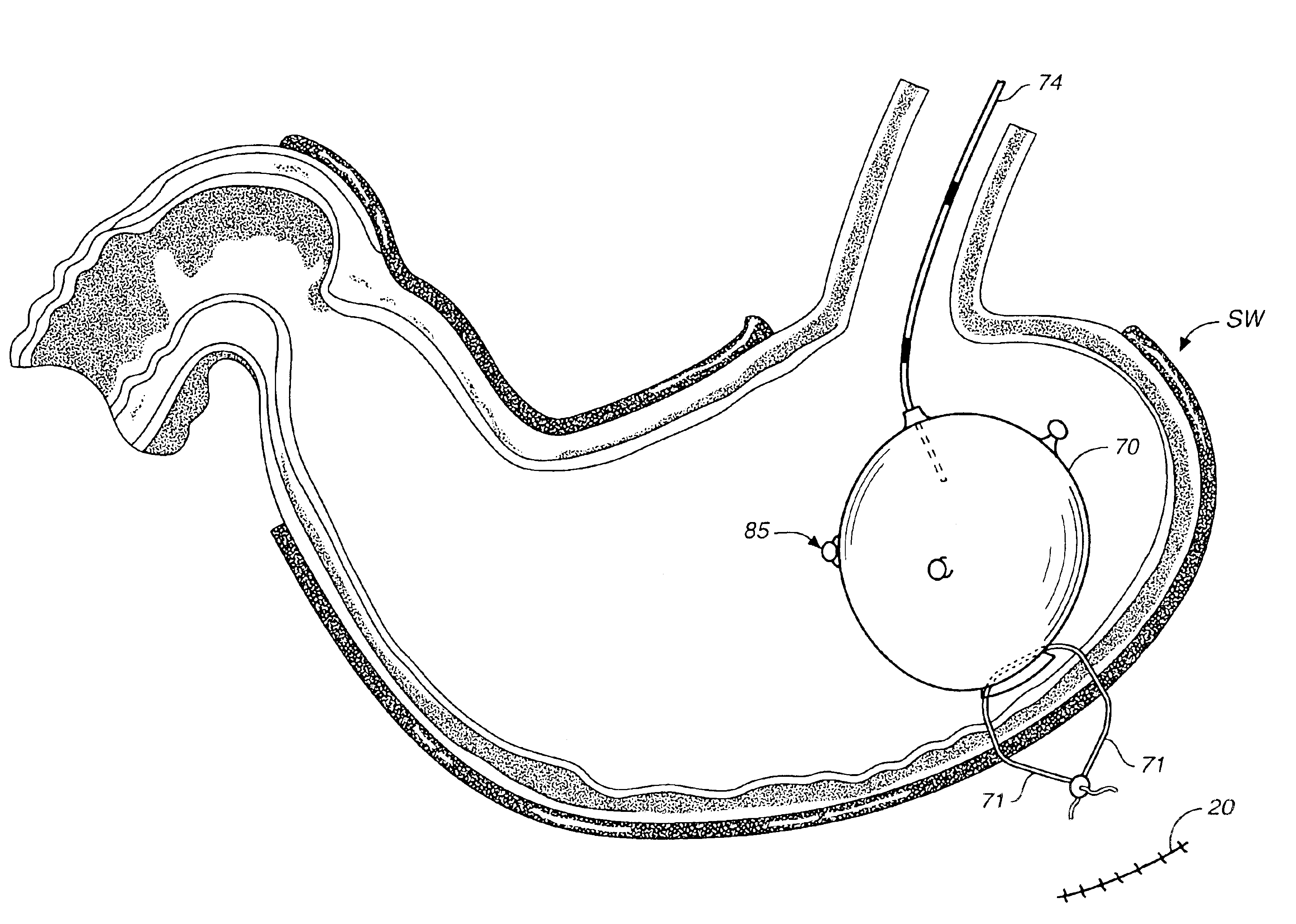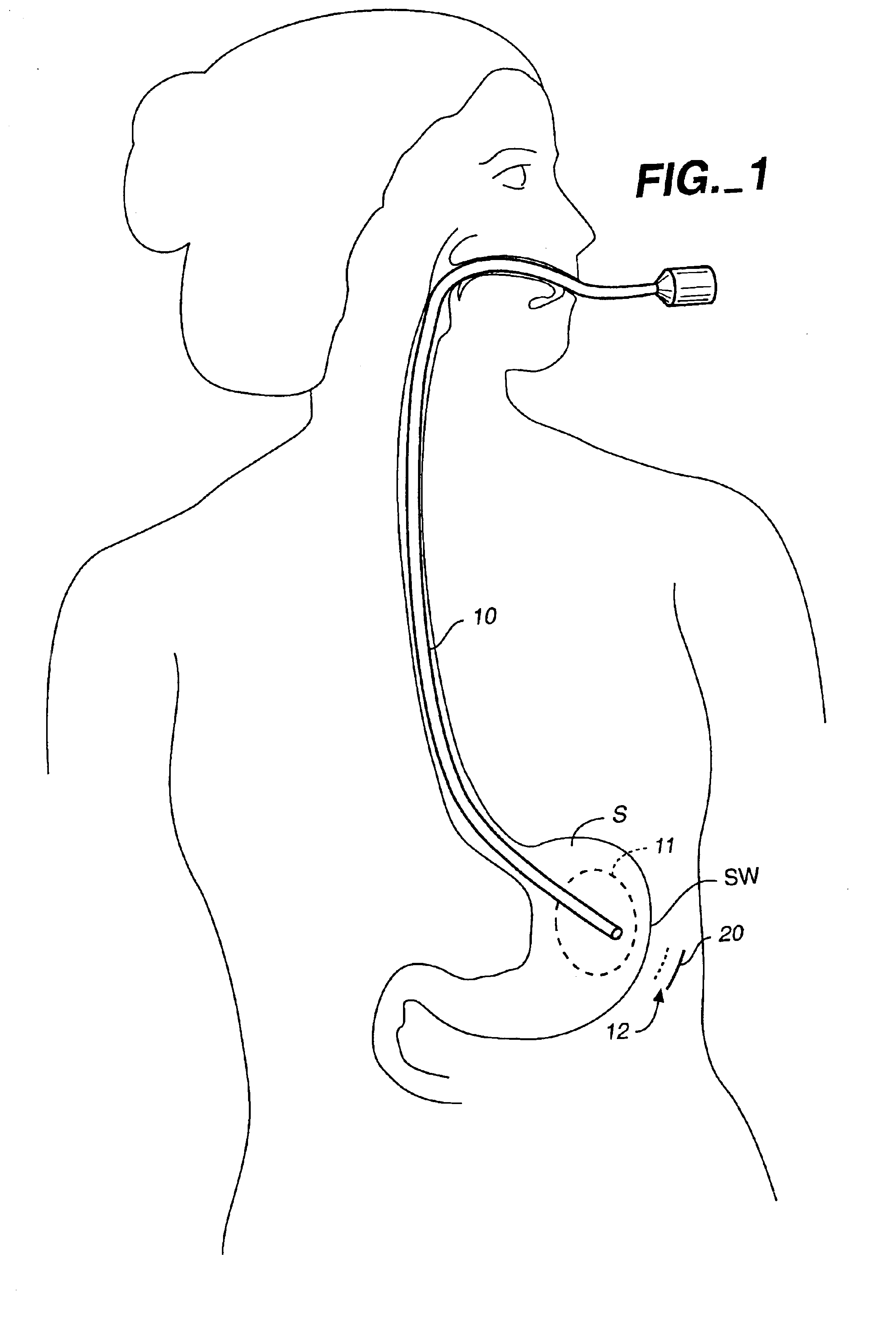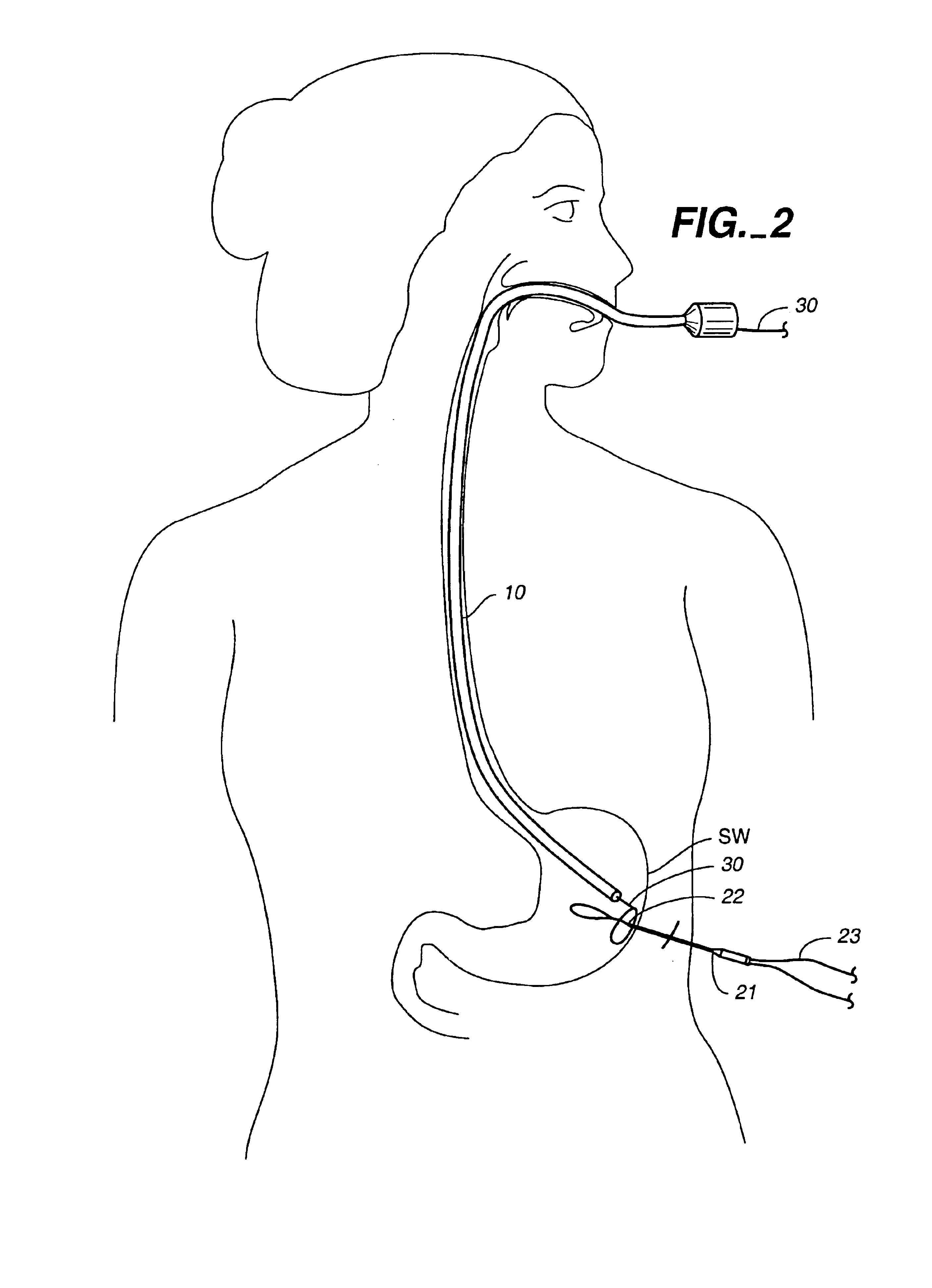Method and device for use in minimally invasive placement of space-occupying intragastric devices
a space-occupying, intragastric device technology, applied in the field of medical equipment and methods, can solve the problems of large incisions and long recovery time, unsatisfactory clinical results, and even death, and achieve the effect of reducing the risks associated, facilitating access to procedures and devices, and reducing the risk of complications
- Summary
- Abstract
- Description
- Claims
- Application Information
AI Technical Summary
Benefits of technology
Problems solved by technology
Method used
Image
Examples
Embodiment Construction
[0043]The present invention provides for space occupying devices deployable in a patient's stomach, and methods of deployment, manipulation and removal of such devices.
[0044]Method of Deployment and Removal
[0045]A space occupying device according to the present invention can be deployed into the patient's stomach in a variety of ways, including passing the device through the mouth and down the throat with the aid of an endoscope or like device (transesophageal approach), or by performing procedure similar to a percutaneous gastrostomy procedure and gastric fistula to pass the device through the stomach wall and into the stomach. In a preferred method, a combination of both these approaches is taken, as further described herein. Prior to undergoing this procedure, the patient is preferably sedated to lessen the patient's discomfort, and a local anesthetic may also be applied at the site of the puncture or incision.
[0046]FIGS. 1-6 illustrate in further detail an inventive method of de...
PUM
 Login to View More
Login to View More Abstract
Description
Claims
Application Information
 Login to View More
Login to View More - R&D
- Intellectual Property
- Life Sciences
- Materials
- Tech Scout
- Unparalleled Data Quality
- Higher Quality Content
- 60% Fewer Hallucinations
Browse by: Latest US Patents, China's latest patents, Technical Efficacy Thesaurus, Application Domain, Technology Topic, Popular Technical Reports.
© 2025 PatSnap. All rights reserved.Legal|Privacy policy|Modern Slavery Act Transparency Statement|Sitemap|About US| Contact US: help@patsnap.com



